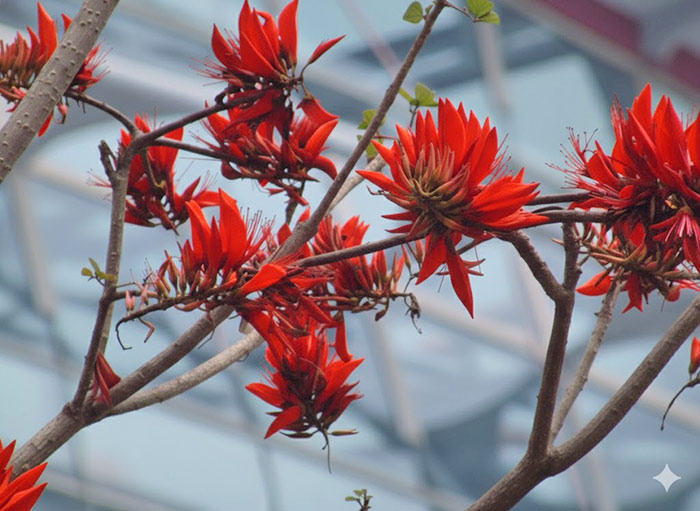Erythrina variegata
Taiwan is the ancestral homeland of the Austronesian people. Many Austronesian tribes use the Indian coral tree as a calendar plant, and many indigenous people also regard it as a significant tree for marking time. In the past, indigenous tribes such as the Pingpu, Puyuma, and Paiwan utilized the seasonal changes of the Indian coral tree, including its leaf falling and flower blooming, as a reference for the annual calendar. For example, the Tao people of Orchid Island begin their traditional flying fish season when the Indian coral tree flowers bloom, while the Pingpu groups consider the blooming of the flowers as the start of the year. There are many places named after the Indian coral tree throughout Taiwan, such as Citong Township in Yunlin County.
The Indian coral tree is distributed in warm climate regions such as southeastern China, Taiwan, the Ryukyu Islands, India, Malaysia and Polynesia. In Taiwan, it can be found in various plains as well as on the Hengchun Peninsula and the coast of Orchid Island. The Chinese name "刺桐" (cìtóng) comes from the dense thorns on the trunk of this plant. The bright red flowers are beautiful and thus it can be cultivated as ornamental tree. They are commonly used by public institutions and schools in Taiwan as street trees, park shade trees, and campus greenery. The Indian coral tree thrives in warm climates and prefers sunny environments but is not cold-resistant. Next to the Naturalist Center, there are several large Indian coral trees, and a row of them was originally planted on the traffic island of Xitun Road as street trees. In 2003, the Erythrina gall wasps invaded Taiwan, causing severe damage to Indian coral trees across the island. The museum was also affected, and now only a few healthy trees remain. However, female Erythrina gall wasps still lay eggs on new buds or leaves, and the resulting galls can impact leaf growth and nutrient production.
In addition to their use as landscape and street trees, the bark, root bark, flowers and leaves of the Indian coral tree can be used for medicinal purposes. However, caution is required when using the bark or root bark, as excessive amounts can be toxic to the human body.
